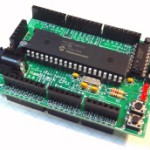 That's right, we've got yet another interview in this show. Is anyone screaming "UNCLE!" yet? George from Sierra Radio Systems and Nick from Pignology are our guests tonight, talking about several of their ham radio related products. They have a product launch they're doing at the Dayton Hamvention this year and wanted to let everyone know what they have in store so it's out there before the chaos in Ohio. Don't despair, howver. This is not a sales pitch. Instead, our fine feathered guests get down into the nitty gritty of their product, explaining what it does, how it does it, what hardware it uses and what software as well. You'll be happy to know it's all Free Software based and an incredible find for anyone looking for comprehensive remote station control. George and Nick also happen to be responsible for a significant chunk of the donation money LHS needed to be a part of Dayton this year so we are eternally grateful to them for that. The best part of all this: That's only HALF of the show. This one's so packed full of information it might just explode.
That's right, we've got yet another interview in this show. Is anyone screaming "UNCLE!" yet? George from Sierra Radio Systems and Nick from Pignology are our guests tonight, talking about several of their ham radio related products. They have a product launch they're doing at the Dayton Hamvention this year and wanted to let everyone know what they have in store so it's out there before the chaos in Ohio. Don't despair, howver. This is not a sales pitch. Instead, our fine feathered guests get down into the nitty gritty of their product, explaining what it does, how it does it, what hardware it uses and what software as well. You'll be happy to know it's all Free Software based and an incredible find for anyone looking for comprehensive remote station control. George and Nick also happen to be responsible for a significant chunk of the donation money LHS needed to be a part of Dayton this year so we are eternally grateful to them for that. The best part of all this: That's only HALF of the show. This one's so packed full of information it might just explode.
73 de The LHS Guys
Podcast: Play in new window | Download



